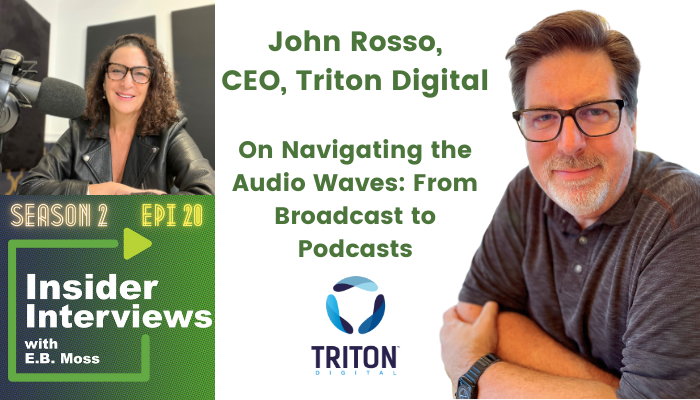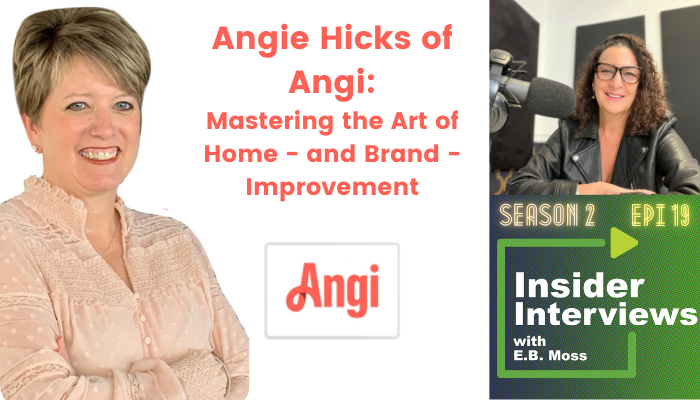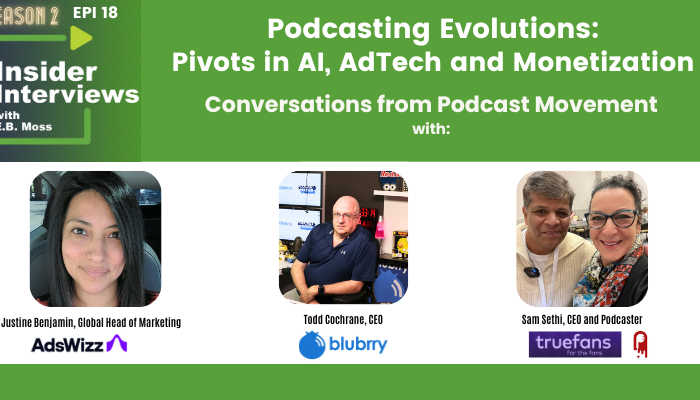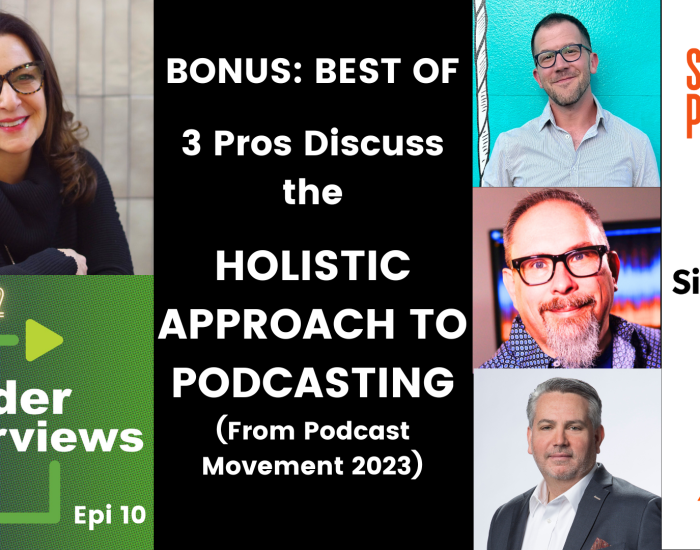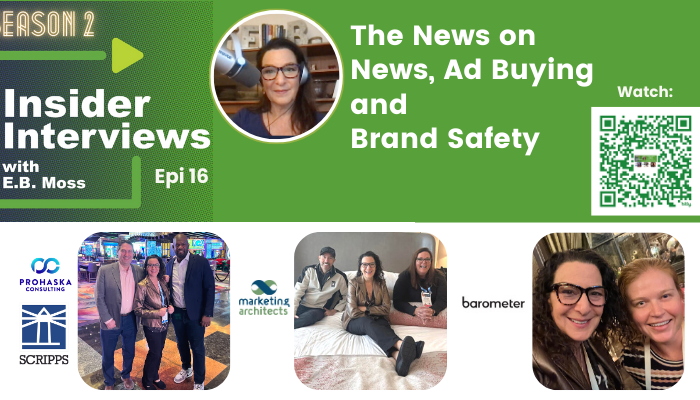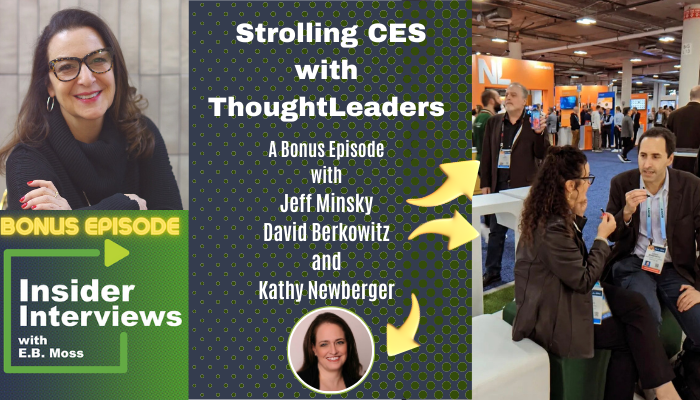Triton Digital CEO John Rosso on Navigating Today’s Audio Waves
Podcast: Play in new window | Download (Duration: 39:24 — 54.6MB) | Embed
Subscribe or Follow Spotify | Android | Pandora | iHeartRadio | TuneIn | Deezer | RSS | More
To learn about how audio and advertising is evolving — in an enjoyable way — there’s really no one better to hear from than John Rosso. While I’ll forever be grateful that perhaps helping him pivot to avoid a close encounter with potato salad (you’ll just have to listen to understand) led me to work […]

